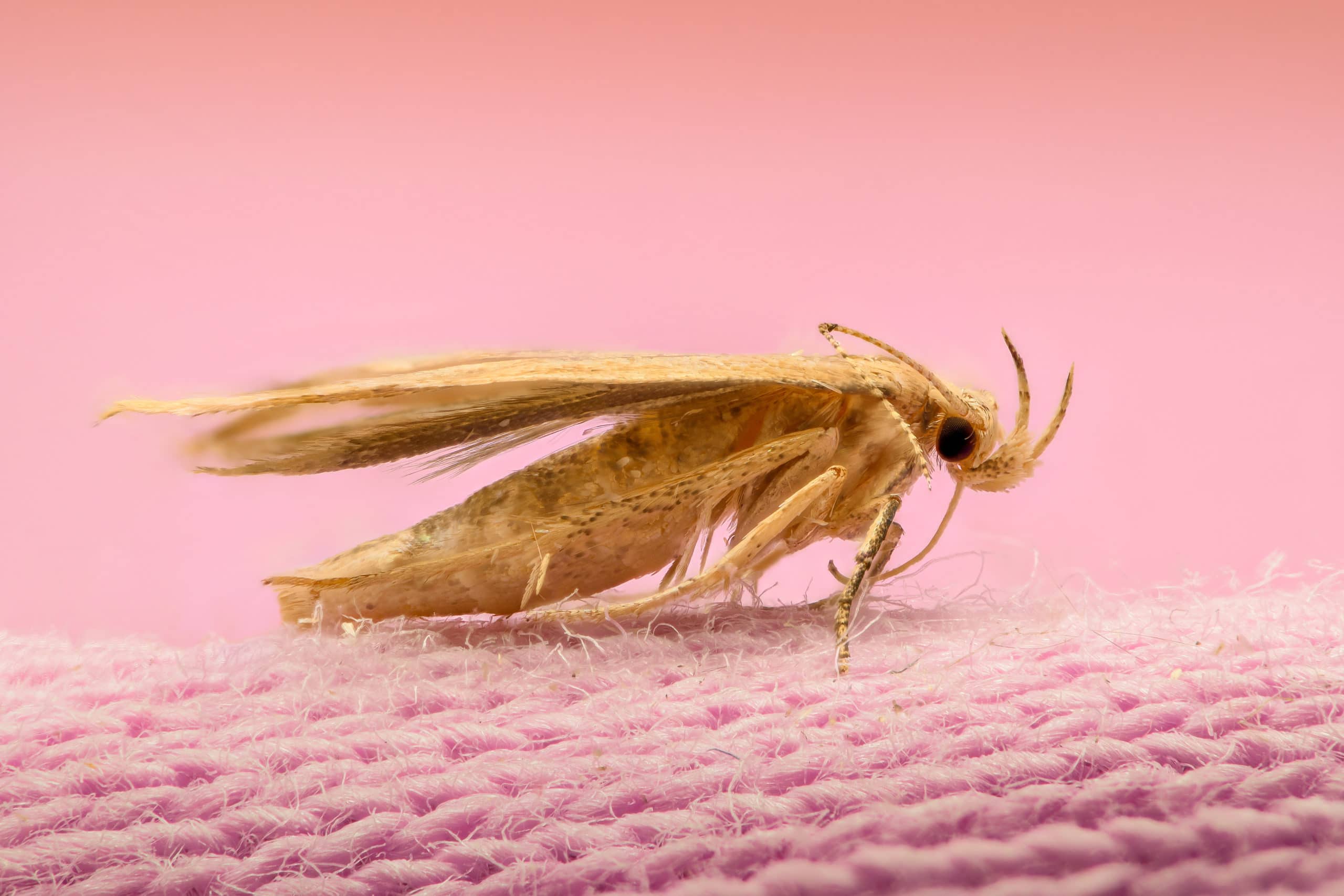When thinking of old clothes in closets, garment bags, plastic dry cleaning bags, and moth-balls often come to mind. The clothes kept are often victim to clothing moths over time if not monitored.
If you are dealing with clothing moths and seek relief, reach out to Environmental Pest Management for a free quote today.
If you want to take back your closet and protect your favorite clothing from destruction, we have your back. Read on for our tips on dealing with clothing moths.
Small Powerful and Mighty
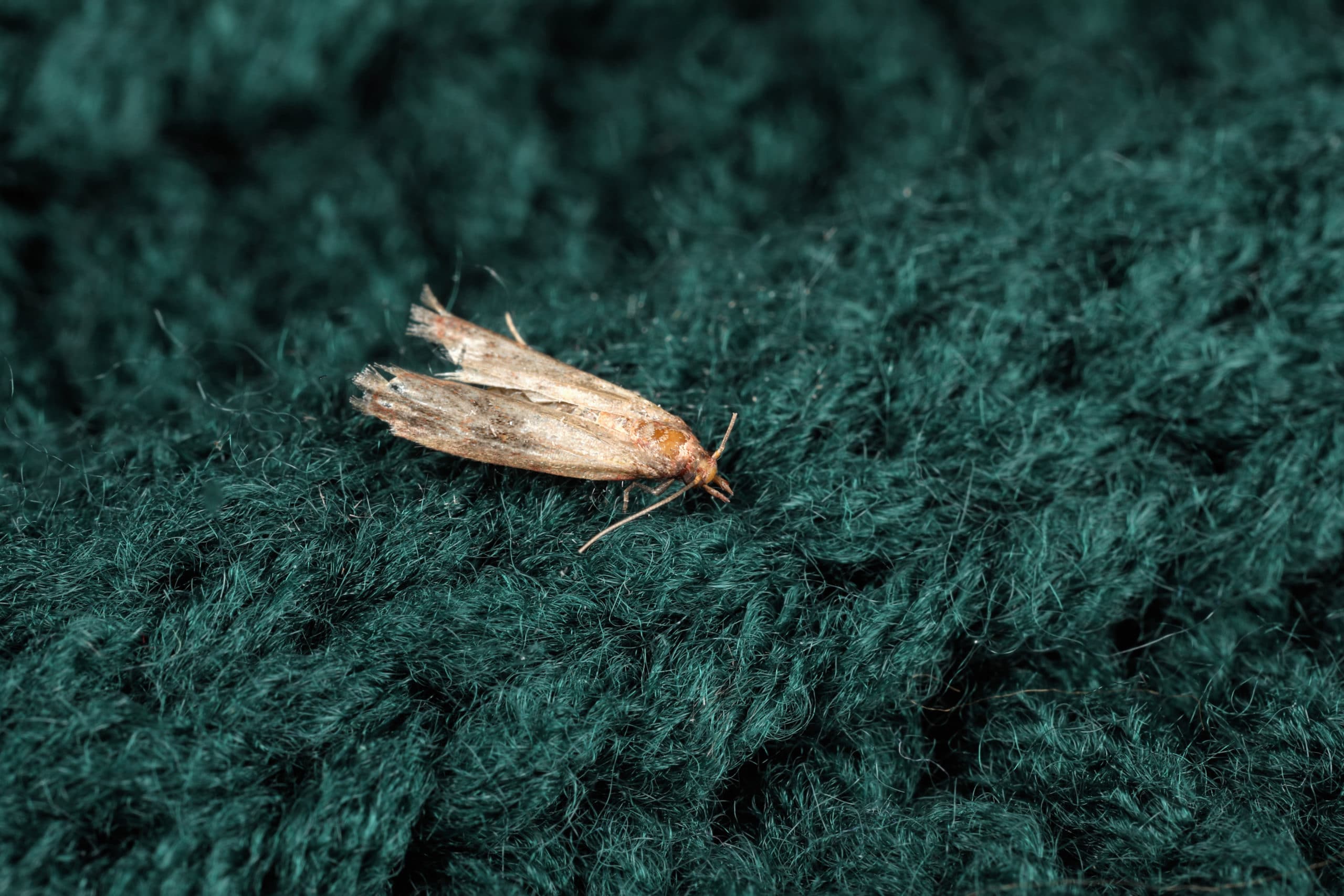
The name clothing moth is quite deceptive. Webbing and Casemaking Clothing Moths also feast on items containing the protein keratin. Examples of these items are but are not limited to:
- Upholstered furniture and drapes
- Items made of animal byproducts such as fur, silk, leather, or wool.
- Dirty clothing (contains body oils, possible food debris, etc.)
Clothing moths differ from their brethren you see around street lamps or sometimes in pantries. While they are related, their appearance and behavior vary greatly.
These moths that don’t feed on clothes are greater than a centimeter long, and will often feed on plants. A fun fact about most moths is that they are bald: a detail that one would only notice with a microscope in most cases.
A great rule of thumb if you see a moth is that if it is over a centimeter long, it is not a clothing moth.
There are two types of clothing moths: Casemaking Clothes Moths (Tinea Pellionella) and Webbing Clothes Moths (Tineola Bisselliela). Unlike their traditional moth counterparts, they are just one centimeter long and are yellow or greyish.
Being just one centimeter long makes these moths particularly hard to distinguish from one another. Webbing Clothing Moths are uniform in color. Casemaking Clothing Moths, on the other hand, are of the same color, but their wings are often speckled.
Traits that both moths share are the tufts of hair on their heads as well as their size. The next feature is what sets these fabric munchers apart from their larger outdoor counterparts. Neither species of clothing moths have mouths once they are grown.
You read correctly, and they have no mouths. So how these moths can eat clothing and fabric is the mystery here. The actual adult clothing moth does not eat fabric; their larvae do.
Hungry at Birth
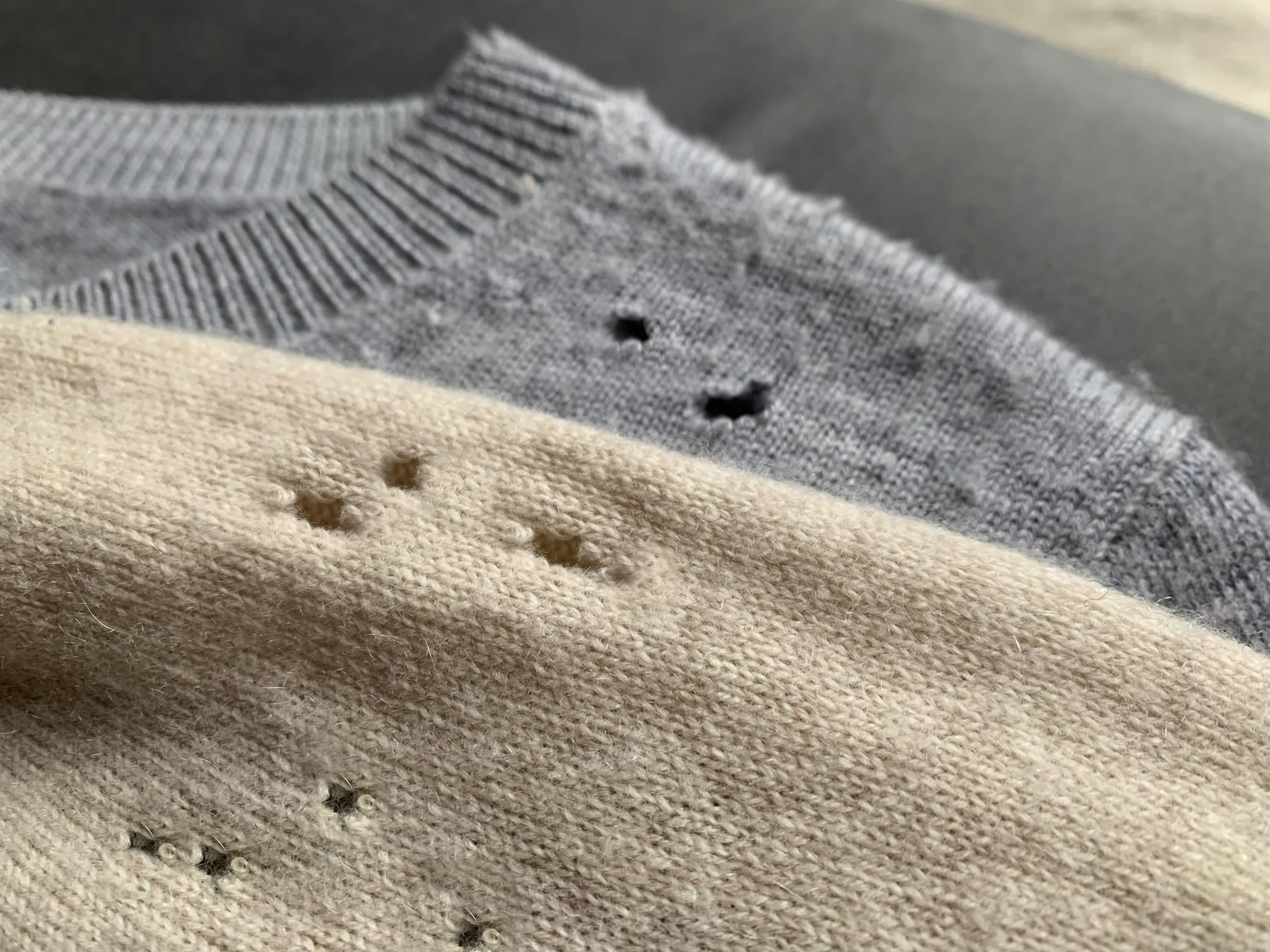
Clothing moths of either species lay their eggs on clothing so that they have food when they hatch. According to an article written in the New York Times, the eggs are held to the fabric by an adhesive layer covering them.
Other cloth eating insects like the Carpet Beetle will not have this layer, making them easy to dispose of with a vacuum and vigilance. The concrete coating makes them impervious to vacuuming or dusting.
Once they are born, they feed on whatever clothing they are attached to. Among clothing moths, favorite foods are animal originated fibers, feathers, mohair, wool, and fur. They also prefer clothing that has lingering body oils or food even.
Unfortunately, though, the eggs are not typically seen until they have hatched. Their larvae leave a web that resembles dried snot. This web is a trait of both species of Clothing Moths.
A Bug’s Life
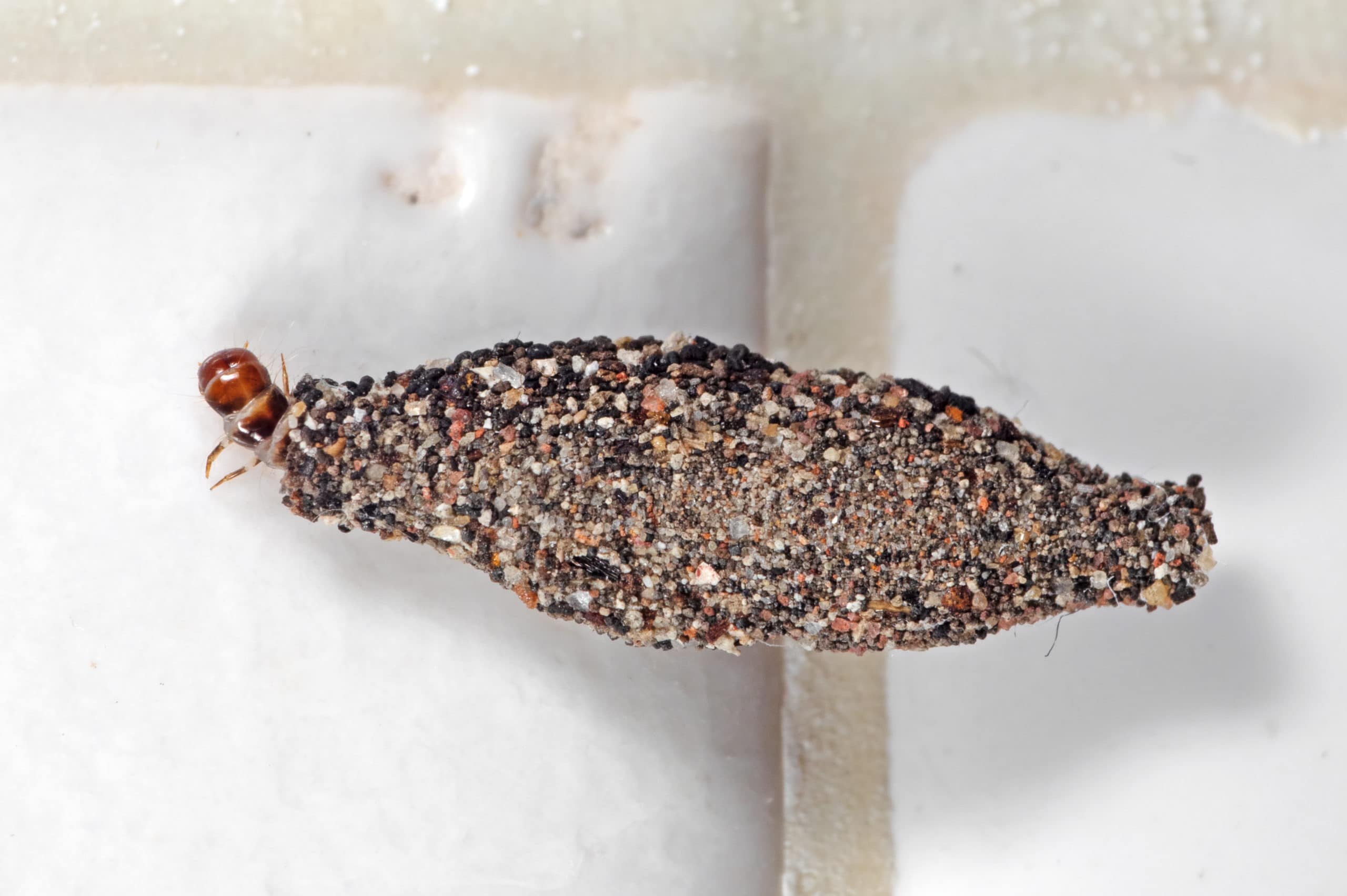
Request A Free No-Obligation Quote Today
We serve Dakota, Hennepin, Ramsey, Washington, and Anoka Counties.
We also serve Carver, Scott, Rice, Lesueur, and Steele
Both the Webbing and Casemasking Clothes moths go through complete metamorphosis. That is, there are four stages to their short lives; egg, larvae, pupa, and adult.
When eggs are laid by either Clothing moth species, the gestation period is four to ten days. This time frame can change drastically, depending on the temperature they are laid in. In the winter, they can take several weeks to hatch.
Casemaking moths will attach themselves to their food source with a silk thread and hang from it. Webbing moths will make cocoons out of silk where the larvae will feed. These cocoons are a definite sign of infestation.
Their development will take one to three months, depending on temperature and availability of food.
Once an adult, males immediately begin to mate as much as possible. They will only live for about a month. Their female counterparts live just as long and will lay as many as 300 eggs before dying.
In the event that larvae and eggs are found on clothing, a great DIY option is brushing the larvae off the garment outside in the sunshine. You can also take the step of dry cleaning items not damaged.
Preventing Clothes Moths and Protecting Your Closet
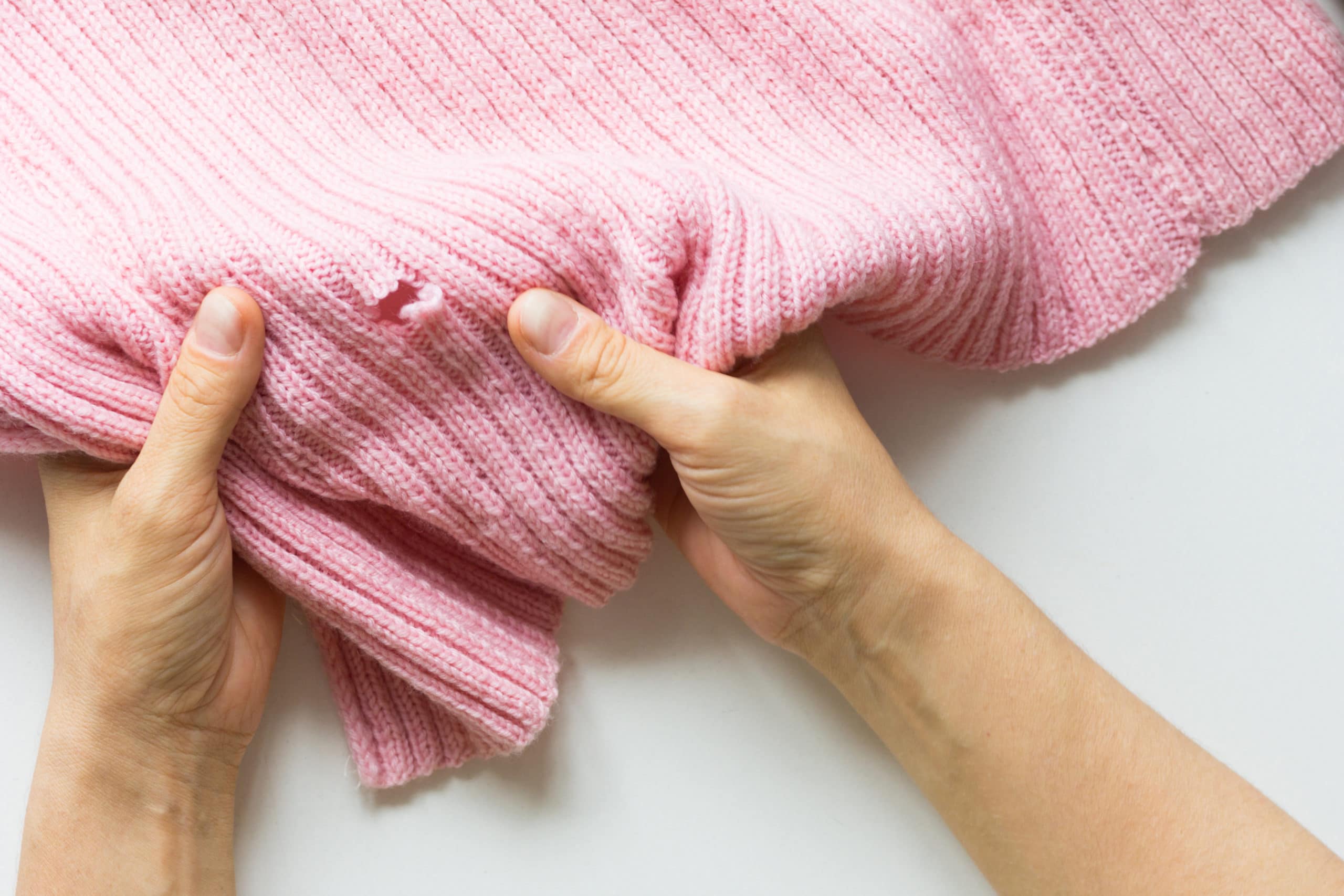
As with any pests large or small, prevention is the key to avoid infestation. However, prevention isn’t often thought of until the first holes are seen, and the moths are gone.
Clothing moths love to be in dark and warm places, just like the backs of our closets. Mostly because the clothes are left alone, there is no light, and it is not cleaned regularly. Sometimes even clothing kept in garment bags.
Cloth garment bags are not the best idea because clothing moths will eat through them to get the clothing in it.
The ideal maintenance plan would be moving unused garments every so often and letting light in as well. Clothing moths of either species are not keen on light or movement. This will help prevent them from sticking around.
It is also strongly suggested that the closet said garments are stored in should be deep cleaned and vacuumed periodically.
Clothes that are vintage or are not to be worn again should be placed plastic sealed containers. Vacuum sealed bags are also an excellent storage option that provides excellent protection and is a space saver as well.
Moth-balls are also a common defense, but should only be used as a last resort as they are potentially toxic. If moth-balls are used, directions should be strictly followed.
With good old fashioned cleaning and vigilance, clothing moths can be kept at bay. If you want true peace of mind, however, be sure to call Environmental Pest Management for a free consultation today.
They are well versed in both the eradication and prevention of clothing moths and any other unwelcome pests. Don’t let your most valued wardrobe pieces be destroyed.

